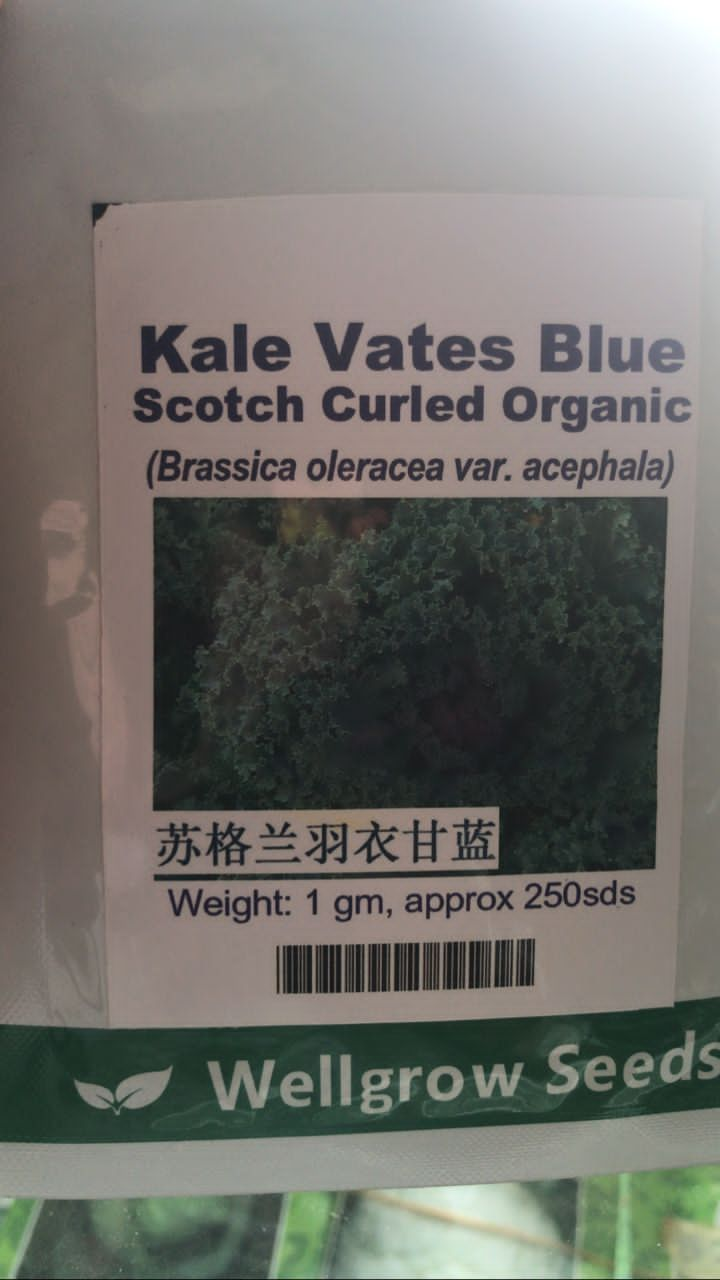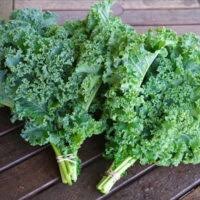No products in the cart.
Return To Shop
0
₦0.00
0
Shopping cart (0)
Subtotal: ₦0.00
Spend ₦500.00 to get free shipping Congratulations! You've got free shipping.
Log in / Sign up
Login Register
Cucumber Avenue seeds SQ 309 F...
₦9,000.00


Demon F1 Hybrid Chilli Pepper ...
₦8,000.00 Original price was: ₦8,000.00.₦7,800.00Current price is: ₦7,800.00.
Curly Kale Vates Blue – 250 seeds
₦3,000.00
The hybrid variety Kale Vate Blue (Scortch Curled Organic) is well-liked. There are no significant disease or pest issues with this cultivar. It can be produced in the spring or the fall because it is a cool-weather crop. It can withstand more heat than any other kale.
vates blue seeds Attributes
Hybrid (Vate Blue) Variety
Organization: Wellgrow Seeds
One gram.
Size of packaging: 250 seeds
High heat resistant resistance
34 people are viewing this product right now
Please, activate Compare option to use this widget.
Estimated delivery:4 days
Share:
Curly Kale Vates Blue
Embrace the culinary and nutritional wonders of Curly Kale Vates Blue, an heirloom variety renowned for its exceptional flavor, vibrant color, and impressive health benefits. This cold-hardy kale boasts finely curled, bluish-green leaves that pack a powerful punch of vitamins, minerals, and antioxidants, making it a true superfood superstar.
Harness the Health Benefits of Curly Kale Vates Blue:
-
Nutrient-Dense Dynamo: Curly Kale Vates Blue is a nutritional powerhouse, brimming with essential vitamins and minerals, including vitamin K, vitamin A, vitamin C, and manganese. These nutrients support overall health, strengthen bones, boost immunity, and promote cell growth and repair.
-
Antioxidant Arsenal: This kale variety is a rich source of antioxidants, which combat oxidative stress, protect against cellular damage, and reduce the risk of chronic diseases.
-
Fiber-Rich Feast: Curly Kale Vates Blue is an excellent source of dietary fiber, which aids digestion, promotes gut health, and regulates blood sugar levels.
-
Flavorful and Versatile: Enjoy the unique flavor and versatility of Curly Kale Vates Blue. Its tender, slightly peppery leaves can be savored raw in salads, smoothies, and wraps, or cooked into soups, stews, and stir-fries.
curly kale seeds Benefits
Curly kale and kale in general have a wide range of advantages, including being a superior source of vitamins C and K.
It has a lot of potent antioxidants.
By lowering cholesterol, it lessens the chance of developing heart disease.
It contains a variety of cancer-preventing compounds.
The nutrient beta-carotene, which is healthy for the skin, hair, and bones, is abundant in curly kale.
curly kale seeds are a good mineral source.
It facilitates weight loss.
It is one of the foods that is highest in nutrients.
How To Grow Curly Kale Vates Blue: Steps
It’s really simple and easy to grow curly kale.
The basic steps of growing curly kale are as follows:
1. Pick the ideal site: Pick a spot with well-draining, organically rich soil that receives full sun or partial shade.
2. Plant seeds or seedlings: Plant kale seeds or seedlings in the ground with a distance of 12 to 18 inches between them. Water the seeds well after planting them at a depth of 1/2 inch.
3. Regularly water the soil to keep it moist but not soggy. To keep the plants healthy and growing, water frequently, especially during hot, dry weather.
4. Fertilize: Before planting, amend the soil with compost or a balanced fertilizer with a 10-10-10 ratio. To give the plants the nutrition they need to grow, fertilize them every 4–6 weeks.
5. Manage pests and diseases: Keep a watch out for illnesses like powdery mildew, cabbage worms, and aphids. To protect the plants, use fungicides and pesticides as needed.
Wait until the kale leaves are big enough to harvest them, which is typically 60 to 70 days after planting. Remove the outer leaves, allowing the inner leaves to develop.
Frequently Asked Questions (FAQs) for Curly Kale Vates Blue
What is Curly Kale Vates Blue?
Curly Kale Vates Blue is an heirloom variety of kale known for its beautiful blue-green, finely curled leaves and exceptional flavor.
What are the health benefits of Curly Kale Vates Blue?
Curly Kale Vates Blue is a nutritional powerhouse, rich in vitamins (A, C, K), minerals (manganese), antioxidants, and dietary fiber. These contribute to overall health, strong bones, a robust immune system, and healthy cell function.
What does Curly Kale Vates Blue taste like?
This kale variety has a unique, slightly peppery flavor that works well in various dishes.
How can I use Curly Kale Vates Blue in cooking?
Curly Kale Vates Blue is a versatile ingredient. Enjoy it raw in salads, smoothies, and wraps, or cooked in soups, stews, stir-fries, and baked dishes.
How do I grow Curly Kale Vates Blue?
Growing Curly Kale Vates Blue is easy! Here’s a basic guide:
- Choose a location: Pick a sunny or partially shaded spot with well-draining, fertile soil.
- Planting: Sow seeds or seedlings 12-18 inches apart at a depth of ½ inch. Water thoroughly.
- Watering: Regularly water the soil, keeping it moist but not soggy.
- Fertilizing: Amend the soil with compost or balanced fertilizer before planting. Fertilize every 4-6 weeks for healthy growth.
- Pest and Disease Management: Watch out for common pests and diseases like cabbage worms, aphids, and powdery mildew. Use appropriate controls if needed.
- Harvesting: Harvest leaves once they reach a good size (typically 60-70 days after planting). Pick outer leaves first, allowing inner ones to grow.
Only logged in customers who have purchased this product may leave a review.


Reviews
There are no reviews yet.